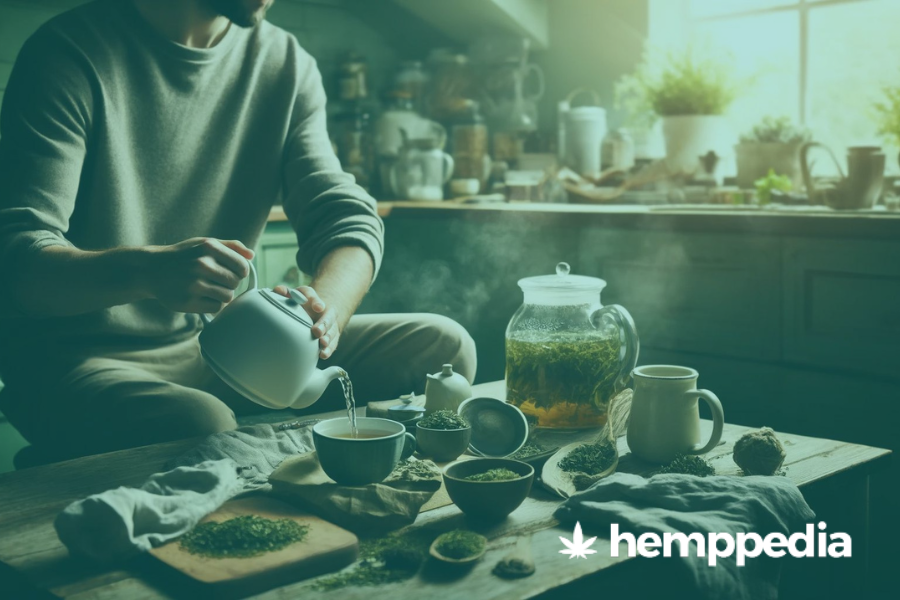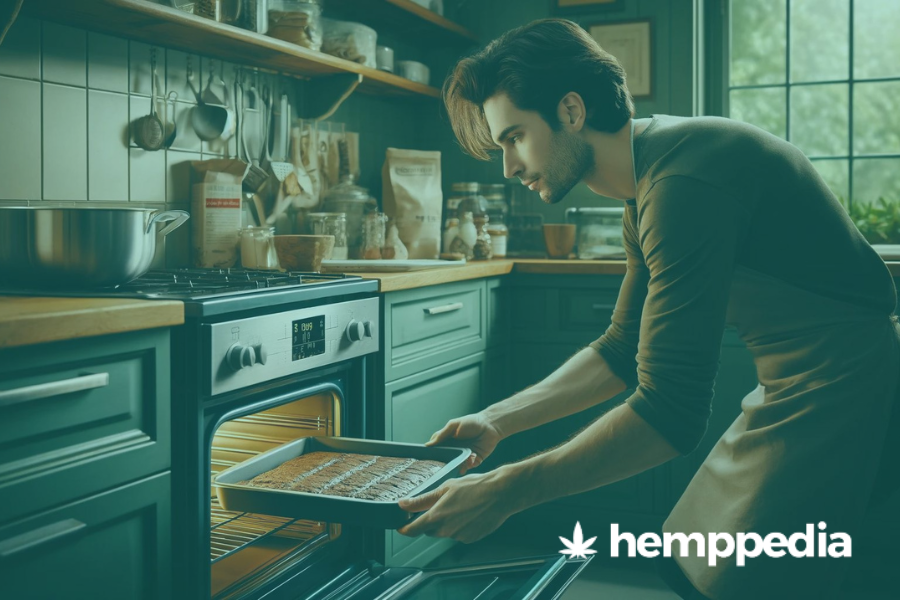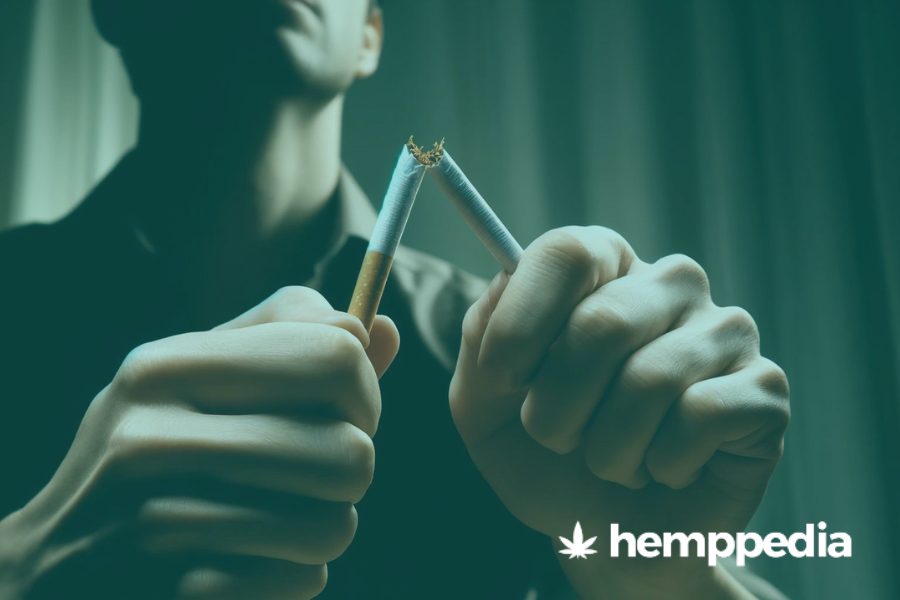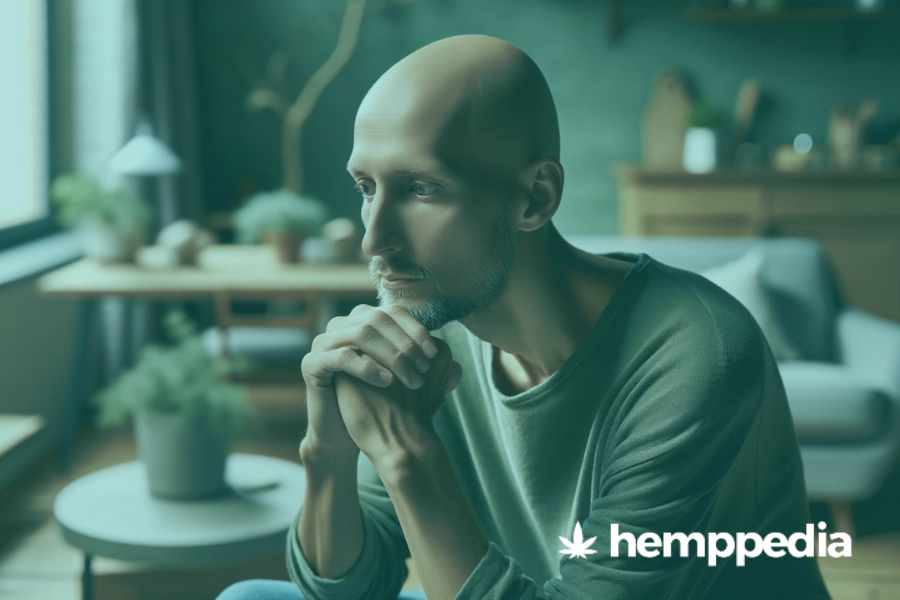Tea made with cannabis leaves, buds, flowers, or cannabutter is cannabis tea.
While cannabis edibles such as brownies, chocolates, gummies, marshmallows are modern favorites, the practice of drinking cannabis tea has its traditional roots in folklore medicine, where people consumed it for its diuretic and diaphoretic properties.
Undeniably cannabis edibles are a discreet and tasty method to consume cannabis. But inaccurate quantities and incorrect processing methods might lead to unpleasant side effects. For this reason, this post emphasizes the importance of responsible usage of edibles and to exercise caution while preparing, storing, and consuming them.
Equally important, remember to conform and comply with the legality of possession and use of cannabis, hemp-derived products, including CBD in the state you live.
Recommended reading:
There are a variety of ways to make a homemade cannabis tisane, depending on your personal preferences. Let us look at a few popular methods in this blog post.
Standard Tea
The 2007 study1 reports that plenty of users consume cannabis tea for medicinal purposes. Besides, the study has made known a standard protocol for preparing tea and advises users of medical cannabis to prepare cannabis tea according to a specific method as given below.
- Cannabis 1.0 gram
- Water 1.0 Litre
Boil 1 gram of cannabis in a liter of water and simmer for 15 minutes. Filter the plant matter using a sieve. The tea can be consumed immediately or stored in an airtight bottle for up to five days and used when necessary.
The study refers to this method of preparation as ‘standard tea’ and used the same recipe to conduct tests to determine the effect of the main cannabinoids THC and THCA present in the tea.
Conclusions and key takeaways from this study:
The below observations summarized from the study could be very useful to people who consume cannabis tea for medicinal or recreational purposes and to people enthusiastic about cannabis edibles. Improved understanding about incorporating cannabis into every diet could pave the way to a better appreciation of this form of administration.
- ‘Cannabis tea is considered a contemporary example of a widely used, but poorly understood herbal medicine.’
- Cannabis tea has limited potency and contains a saturated solution of THC forms.
- The behavior of cannabinoids (THC & THCA) in boiling water during the tea preparation revealed that THCA was more water-soluble than THC.
- Interestingly, although the amount of THC in 1 g of cannabis is potentially very high, the whole volume of the standard tea contains only about 10mg THC per liter in the water phase.
- People consuming cannabis tea for medicinal purposes can add coffee creamer as an easy and safe alternative to stabilize the preparation. Moreover, the addition of coffee creamer does not change the levels of THC and THCA, it helped stabilize their potencies during refrigerated storage.
- Analysis of the tea sample indicated that conversion of THCA into THC was limited in boiling water.
- The total THC present in the plant material before and after tea preparation was equal, illustrating no depletion of THC (by degradation).
- Reduction in the volume of tea preparation, say from 1 liter to 250 ml, did not show any change in the THC, THCA, and other cannabinoid levels in prepared tea.
- The level of THC in the tea depends on the boiling time. Because increasing the boiling time from 15 to 30 minutes resulted in higher levels of THC. Comparatively, THCA levels remained the same at all boiling times.
- Moderate modifications in the preparation method did not record any quantitative or qualitative changes.
- Finally, the potency of the cannabinoids decreased significantly in refrigerated and preserved cannabis tea.
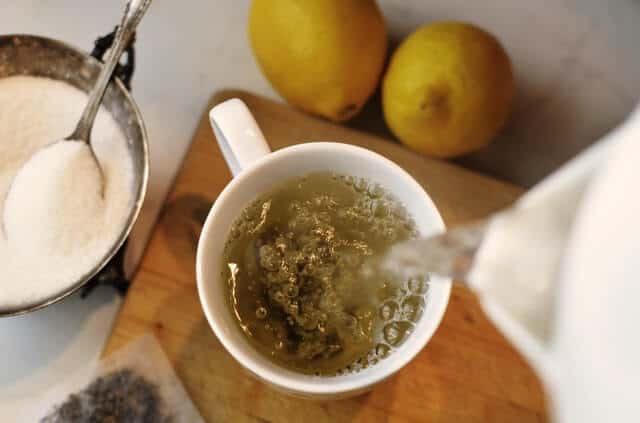
Cannabis-infused tea
Serving: 1 person, preparation time: 2-3 minutes
Ingredients required:
- 0.5 gms – half a gram of ground cannabis flower or cannabis leaves (trimmings) or ground buds (this measure is not a recommendation, you may use smaller proportions)
- 150 ml hot water
- Any flavor teabag of your choosing (optional)
- Coffee filter/ mesh/ strainer
- Coconut milk or coffee creamer (optional) – 1 tablespoon
- Honey/Sugar (optional) ½ – 1 tsp
- 1 Teacup (that holds 150ml)
Preparation method 1:
Place your chosen flavor of tea bag in the teacup, add honey/sugar(this is optional and depends on your taste). Seat the filter on your teacup and place the ground cannabis buds/ leaves or flowers in it. Now, pour boiling water through the cannabis just till a little below the brim of your cup. Allow this to stay for two to three minutes. Remove the strainer and the teabag, stir and consume.
Preparation method 2:
If you prefer milk in your tea, you can mix it just before you sip.
Effects of cannabis-infused tea
- Consuming cannabis this way does not produce any intoxicating effects of THC since cannabis does not go through direct heating or decarboxylation. Hence, CBD or THC is not activated. Instead, THCA and CBDA are more potent in this preparation method.
- An observation from a 2006 study2 is noteworthy here. It reports on the potential immune-modulating effects of THCA in unheated Cannabis Sativa extracts.
- Additionally, to learn more about the medical benefits of THCA, you may refer to the blog post THC VS THCA.
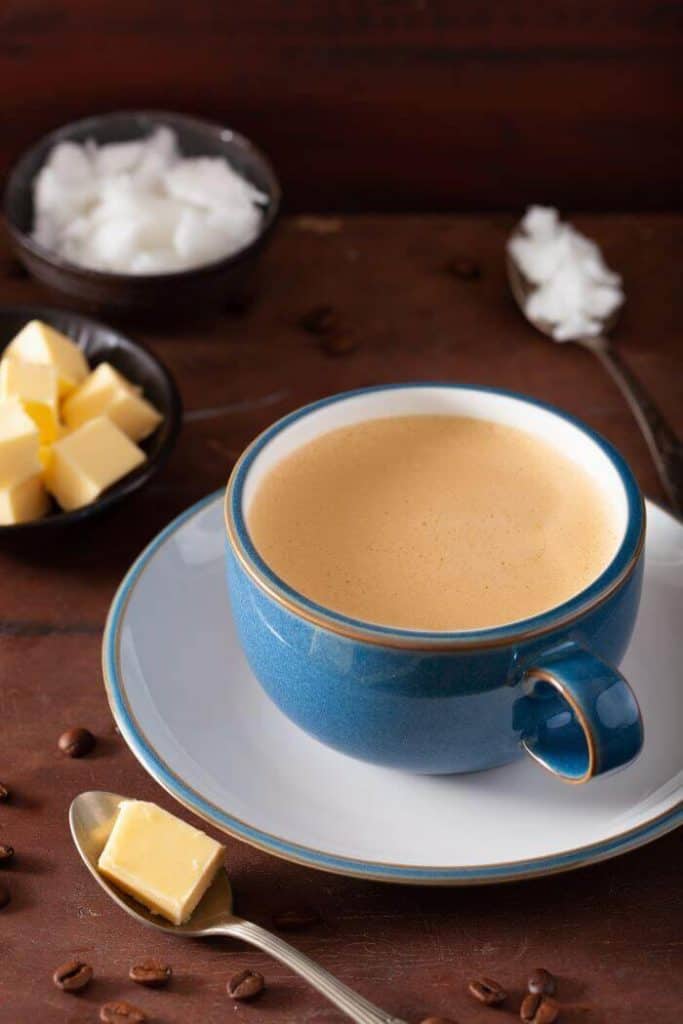
Tea prepared with decarbed cannabis and coconut oil
In the blog post CBDA VS CBD, we discussed that CBDA, THCA, and CBCA remain in their acidic forms. In other words, they are naturally present in raw or dried cannabis stems, leaves, buds, and flowers. They have to undergo the decarboxylation process to get their pure forms CBD, THC, CBC, and CBG activated.
Also, most phytocannabinoids are hydrophobic and lipophilic. They are insoluble in water but highly soluble in fatty substances like oil, butter, full-cream milk, etc.
As a result, tea prepared with decarbed cannabis activates the cannabinoids so that you can experience its effects in your cannabis tea. Eliminating the acidic forms and making the plant material potent with pure cannabinoids adds significant value to your cannabis tea.
Serving: 1 person, preparation time: 15-18 minutes approximately.
Ingredients required:
- 1 g – one gram of ground cannabis flower or cannabis leaves (trimmings) or ground buds (this measure is not a recommendation, you may use smaller proportions)
- 250 ml (1 cup) of water
- 1 Boiling pot
- Any flavor teabag of your choosing (optional)
- Coffee filter mesh/ strainer
- ¼ tsp of coconut oil
- 1 tbsp full cream milk or coffee creamer (optional)
Preparation method:
The first step is to decarb your cannabis and keep it ready. Next, transfer a cup of water to a boiling pot and turn on the heat, and wait for a minute to get the water slightly heated.
Now add the coconut oil, followed by the decarboxylated cannabis, and allow it to boil for 15 minutes, cover the pan with a lid. This prevents evaporation and retains more terpenes in the tea. Stir occasionally.
As a final step, you can drop your favorite flavor of a tea bag into the pot and turn off the heat. At this stage, if you prefer to add full cream milk/coffee creamer or coconut milk, you may do so. Again, cover the tea with a lid for two to three minutes to allow it to settle.
Remove the teabag and transfer the tea to your drinking cup by filtering out the plant matter through a strainer.
You may notice a fat oily layer on the top of your tea. If you think this could bother your stomach, you may choose to skip adding coconut oil. You may substitute any other fatty substance that suits you.
Cannabis tea made with cannabis butter
Serving: 1 person, preparation time: 3-5 minutes ( excluding the cannabutter preparing time)
Ingredients required:
- ¼ tsp of Cannabis butter, also called cannabutter
- (Click here to know how to make cannabis butter)
- 150 ml of boiling water
- Any flavor teabag of your choosing
- 1 tbsp of full cream milk or coffee creamer (optional)
- ½ -1 tsp of Honey/Sugar (optional)
Preparation Method 1:
Preparing cannabis tea with cannabis butter is easy, provided you have a stock of it. Place the tea bag in your teacup, pour boiling water and add cannabutter, honey/sugar, and milk (if you prefer), and mix well. Allow settling for a minute or two.
Consume hot or at room temperature as you prefer.
Method 2:
Here is another variation to the recipe, making cannabis tea with cannabutter.
Pour half a cup of full-fat milk and half a cup of water in a pot and bring to boil. ( You can use your teacup to measure). When the milk and water begin to rise, add cannabutter and mix.
To further enhance the flavor of your tea, mix a teaspoon of black tea (dust or leaves) and boil for another 30-40 seconds, turn off the heat, and close the pot with a lid. Filter and consume hot. (You may add honey/ sugar if you prefer)
Does cannabis tea make you high?
An observation from a 2011 study3 is noteworthy. All oral administration of cannabis products gets metabolized by the liver. Large parts of cannabinoids get converted into slightly different compounds, namely 11-hydroxy-THC. This compound possesses a stronger psychoactive potential than the original THC. Therefore the study recommends waiting for a few hours or more before taking additional servings because edibles and tea can make you feel more high.
Moreover, the measurements mentioned in the above recipes serve one person for one-time use only. Except the standard tea preparation cited from the 2007 study1 details out a recipe for one liter as required for the experiment.
In essence, whether consuming cannabis tea for medicinal or recreational purposes, maintain a low dose, keep a self-check on quantity and frequency. If your goal is to derive therapeutic effects from consuming cannabis tea, consult with your physician to prevent adverse effects from drug interactions.
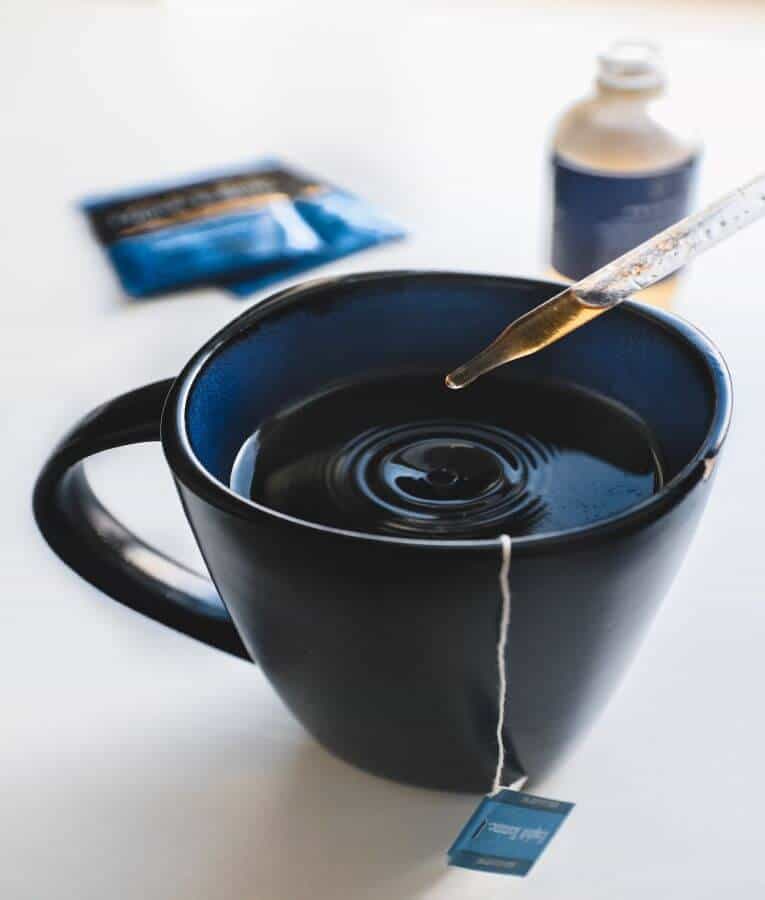
Can you put CBD in tea?
The recipe needs simple ingredients. Just pick any of your favorite herbs. (Chamomile, peppermint, lemon, ginger, lavender, basil) Brew them in hot water, filter, and add a few drops of high-quality CBD oil. Stir and consume fresh.
A 2013 study4 suggests cancer-preventive, anti-aging, antidiabetic and many other general health beneficial effects from consuming green tea and black tea. It adds that the polyphenolic compounds present in tea help to prevent cardiovascular and coronary heart diseases.
Moreover, regardless of any health condition, an immediate handy rescue to any temporary pain, stress, fatigue, stomach upsets, and many other day-to-day issues is a cup of hot tea. Therefore, the myriad of health benefits of CBD combined with the therapeutic ingredients in the tea undoubtedly provide a rejuvenating experience.
How long does cannabis tea take to kick in?
Furthermore, the study adds that it is challenging to measure the intoxicating effects due to the delayed and variable onset effects. That is why Cannabis edibles are often associated with the term overdose. When users do not experience the desired outcome in the initial dose due to delayed onset effects, they end up overdosing.
What is cannabis stem tea?
While making cannabis tea, along with leaves and flowers, you could use them too or store them for later use. Cut the stems and put them in a tea ball, place it in boiling water for 5-7 minutes on low heating, and cover. Turn off heat and allow it to settle. Pour the tea into your mug along with the teabag of your choice.
Takeaways (food for thought)
- Edibles have emerged as a popular form of marijuana use. However, the effects of edibles, how to use them, standardizations in formulation, risks associated with overdosing, and many other concerns need further research.
- Making edibles is not simple. Handling raw cannabis plants, decarboxylating them, preparing cannabis butter, cannabis coconut oil, etc demands years of experience and expertise.
- Availability of different types of equipment. (that might not be available in a home setting)
- For people who are less experienced in handling raw plants, a cup of herbal tea infused with CBD oil is a safer alternative.
- In this blog post, along with learning how to make cannabis tea, we also discussed various aspects of cannabinoids, the significance of onset time, and the risks involved in consuming edibles.
- Keep edibles out of reach of children. Store them in labeled containers not to get them mixed up with other food to prevent accidental intake and associated adverse effects. Safe use of edibles comes with a better understanding.
References
- Hazekamp A, Bastola K, Rashidi H, Bender J, Verpoorte R. Cannabis tea revisited: a systematic evaluation of the cannabinoid composition of cannabis tea. J Ethnopharmacol. 2007;113(1):85-90. doi:10.1016/j.jep.2007.05.019 [↩] [↩]
- Verhoeckx KC, Korthout HA, van Meeteren-Kreikamp AP, Ehlert KA, Wang M, van der Greef J, Rodenburg RJ, Witkamp RF. Unheated Cannabis sativa extracts and its major compound THC-acid have potential immuno-modulating properties not mediated by CB1 and CB2 receptor coupled pathways. Int Immunopharmacol. 2006 Apr;6(4):656-65. doi: 10.1016/j.intimp.2005.10.002. Epub 2005 Nov 7. PMID: 16504929 [↩]
- Hazekamp, Arno. 2011. A review of cannabis tea. [↩]
- Khan N, Mukhtar H. Tea and health: studies in humans. Curr Pharm Des. 2013;19(34):6141-6147. doi:10.2174/1381612811319340008 [↩]
- Borodovsky JT, Crosier BS, Lee DC, Sargent JD, Budney AJ. Smoking, vaping, eating: Is legalization impacting the way people use cannabis?. Int J Drug Policy. 2016;36:141-147. doi:10.1016/j.drugpo.2016.02.022 [↩]

